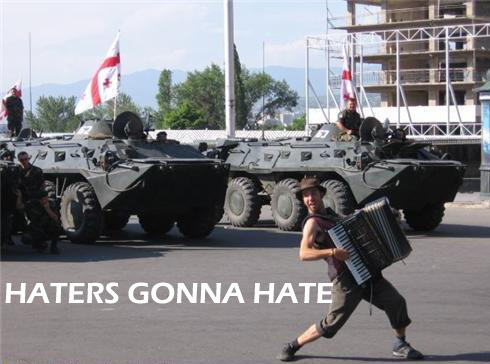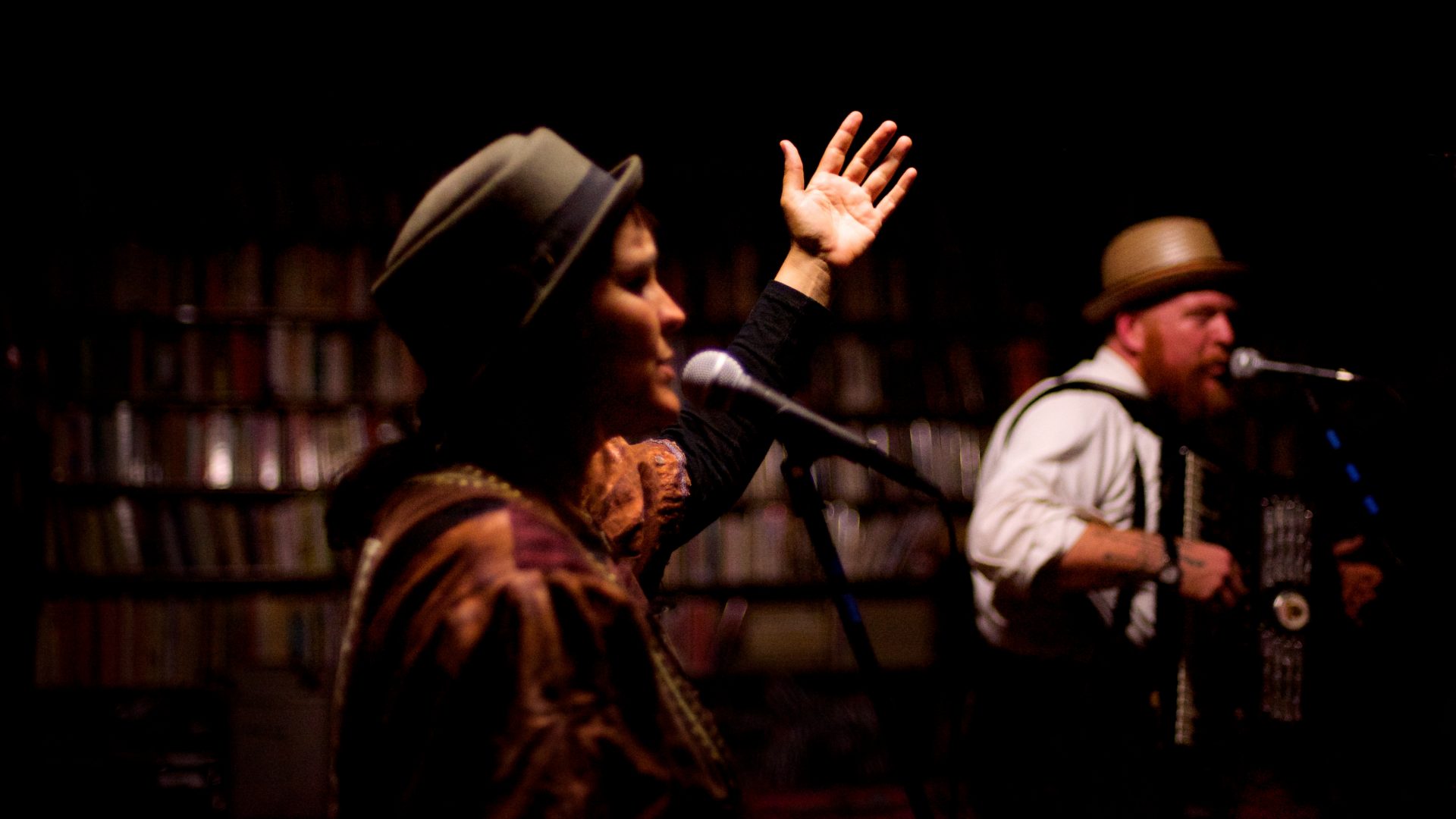I remember when we visited Eastern Europe in 2010 – so many stories from that trip. We planned the trip in order to attend Koprivstica, a Bulgarian celebration of folk music, dance, crafts, and nationalistic self-determinism. When we first heard of Koprivstica, it was from this fellow:

He said that in 2005, it rained cats and dogs all week, and he was forced to take shelter in a barn with a bunch of strangers from around the world, and it was flooding…. and it was the best folk music festival he had ever been to! It only happens every five years, so we planned on making the 2010 event. In 2010, it didn’t rain, and every day was a day spent in a beautiful, historical mountain village in Bulgaria. The festival grounds are about a 20 minute walk from town, so we got to breathe in a lot of that mountain air. More on that in the book.
We ended up going early in order to attend the Krakow Yiddish Festival (http://www.jewishfestival.pl/), where we made acquaintance with a variety of luminaries of the current klezmer scene, including Yiddish Dance Master Steven Weintraub, Musikants Benji Fox-Rosen, Dan Blacksburg, Deborah Strauss, Christian David, So-Called, and Arkady Gendler, among others.
In Krakow, we played at Piecni Pies, “Beautiful Dog” in Polish, at the late night jams at Alkhemia, which started at midnight, and in the street busking. Our traveling band consisted of Samantha Goldberg on flute; Shiri Goldsmith on Trombone, banjo uke, and vocals; Mad Mickey Lee on Fiddle; Aaron Goldsmith on Bajo Setxto; Bruce Salmon on Resonator Guitar; Roy Coon on Clarinet; and myself, Dylan M. Blackthorn on accordion and vocals. We also had a band photographer, Demilitia, and three kids in our little caravan.
I remember when we were busking one night with a big group – it was most of us plus a klezmer band from Bretonny called Klatsch. The cops made us stop due to a noise complaint, and there were some Punks watching us play, who turned out to be in the Polish Anti-Fascist Skinhead scene. They invited us back to the punk bar, where we played some more. I think I drank a bit much that night and slept on the steps of the building where we had class in the morning. I woke up early, and discovered that the flea market where antique, looted Jewish relics were sold during the afternoon was different in the morning. In the morning, it was a pidgeon and dove market. No chickens or turkeys, no chukker or quial, just live pidgeons and doves in cages sold here. It was one of those great surreal moments in life, so unexpected, like entering into a different world. Like so much of my life.
After the Yiddish Festival, we went to Oswieciem (Auschwitz), on a train. We played for the remaining Polish family that had hidden a Jewish friend of ours, Gerry, during World War 2. He jokingly complained as we bought the train tickets that ‘It used to be free’. You could see the smokestacks of Auschwitz from their town.
Next, we played at the “Jewish Community Center” in Oswieciem. It is more of a museum than a JCC, since there is only one Jew left in Oswieciem, and she moved there from Transylvania just to be the one Jew living there. Entering into the town, I could sense a miasma that literally smelled like New York City when I visited there 3 days after the 9/11 event. Yes, you can still smell the burning bodies.
We stayed at the Polish Catholic Monastery, a place that was definitely haunted. It was just like in the old Scooby-Doo cartoons, when Scooby and Shaggy walked down a dark hallway, and the eyes of the paintings of priests in Auschwitz Prisoner Uniforms followed them. It got creepier there, but the story about that will have to wait until the book comes out.
When we got out of Oswieciem, we traveled by train to Buda Pesht, where we stayed with Bali, a great guy, and we played with his band, the Yellow Spots – a Ska-Horror-Jazz band. (http://youtu.be/-IGXPzFTTl0) We got a great, quick tour of Budapest from Bob Cohen while we were there. He has put out some great albums of Hungarian-style Klezmer, under the project Di Naye Kapelye (http://youtu.be/VaAISEq6Gzo) We met up with him later in Bulgaria, hanging out with song Bulgarian Romani who had a fine skill of hip isolation in their dancing. The Romani were not allowed on the stages, but they were there anyways, in traditional garb, busking, selling amazing hand tied sheep hair blankets among other items, and reveling.
Well, that’s all for now – just a taste of our Eastern European adventure, which spanned Poland, Hungary, Romania, Transylvania, Bulgaria, & Greece, with amazing stories from every locale. If you are curious about the book, which tells much, much more… well, I am accepting offers from publishers and agents.
Best Wishes,
Dylan M. Blackthorn
